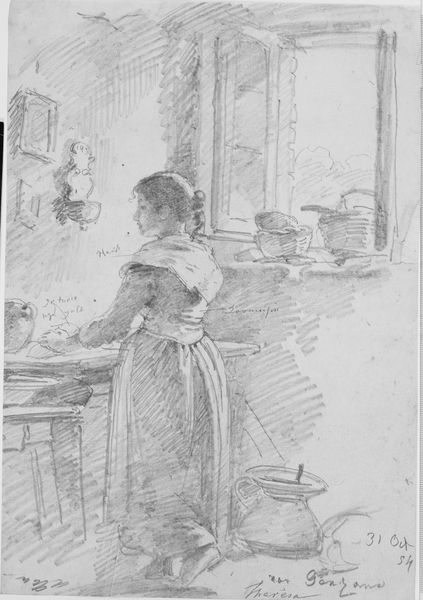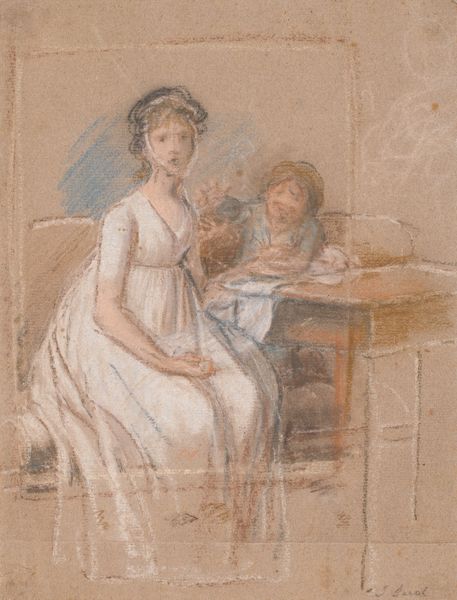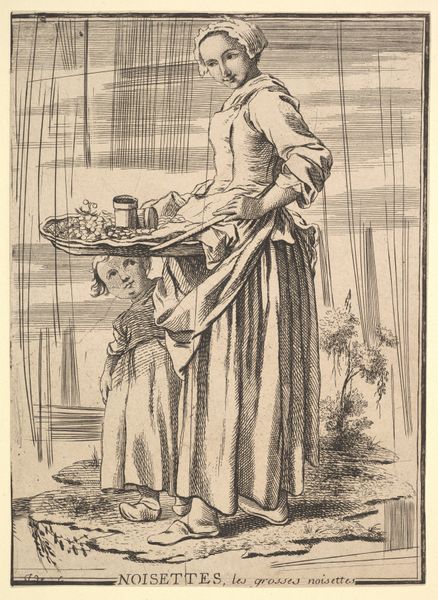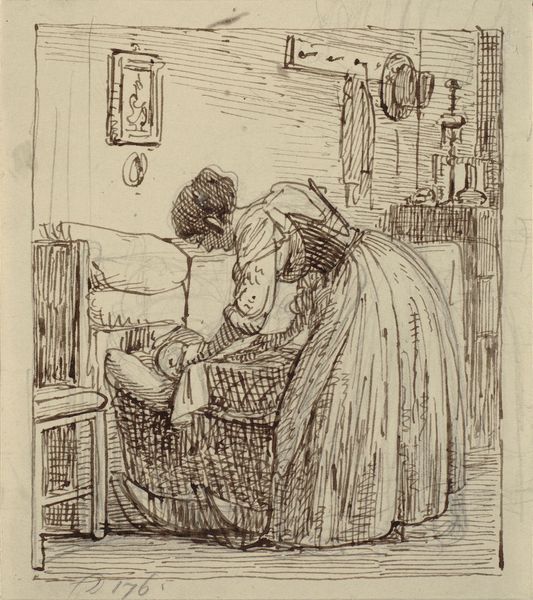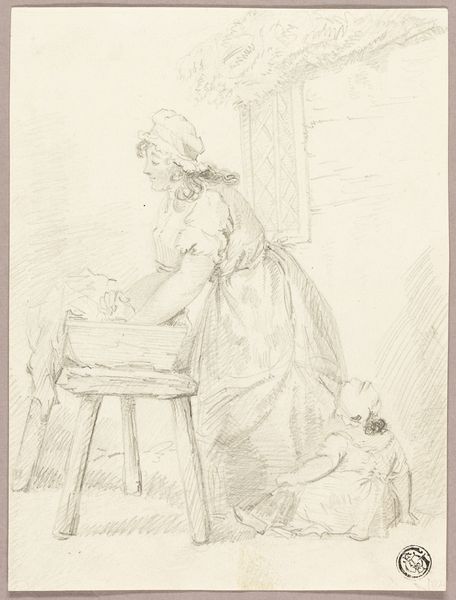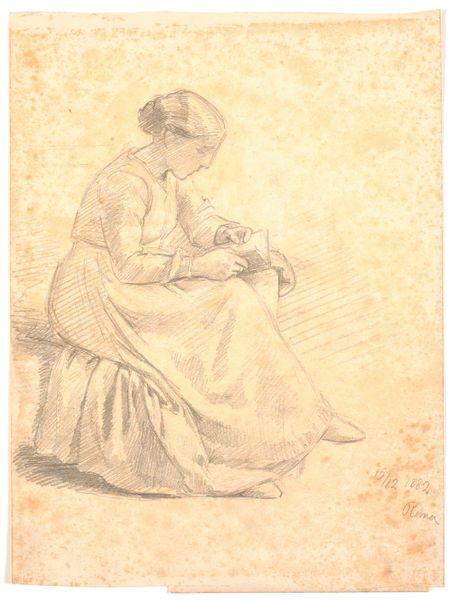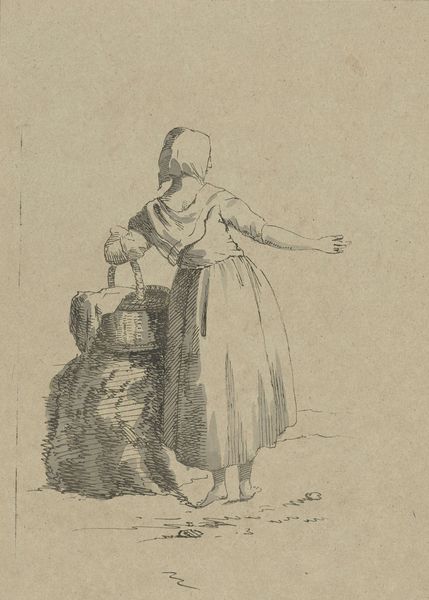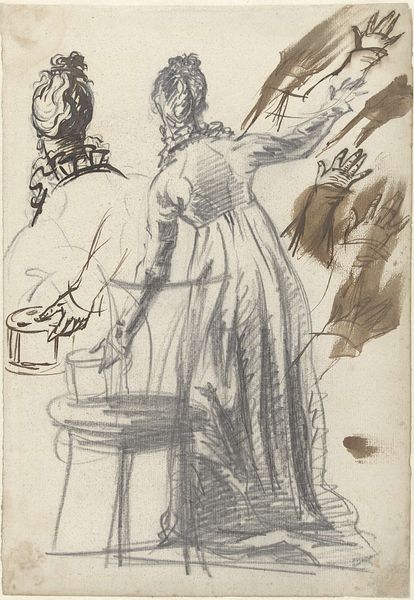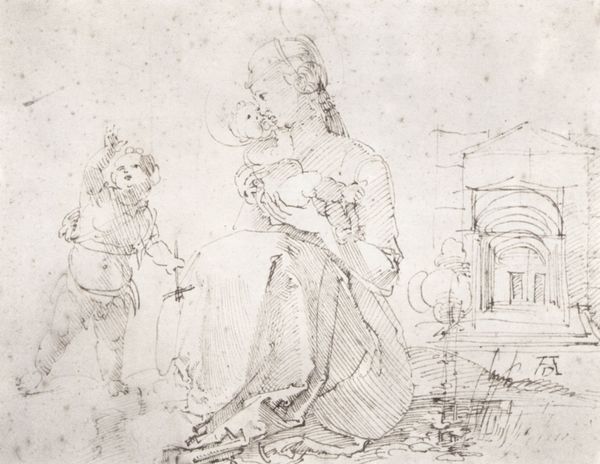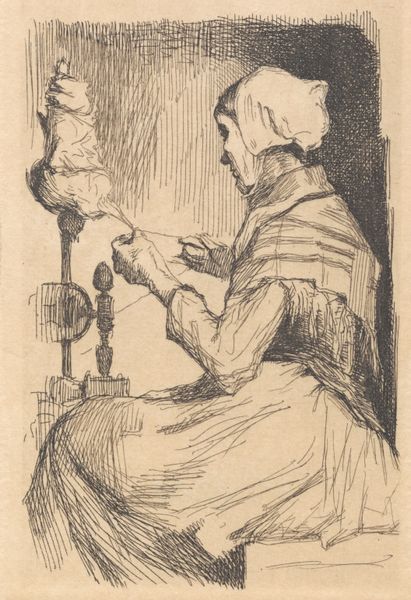
drawing, charcoal
#
drawing
#
charcoal drawing
#
coloured pencil
#
genre-painting
#
charcoal
#
rococo
Copyright: Public domain
Curator: I'm immediately struck by the ephemeral quality of this drawing. The lines are so delicate, the composition feels very light, as though capturing a fleeting moment. Editor: Indeed. Here we have Johann Anton de Peters' work, "Die hübsche Köchin", created with charcoal and colored pencil using rococo stylistic elements. He's known for genre scenes. I’m interested in the processes through which he transformed these humble materials—charcoal and coloured pencil—into an image of aspiration during an era marked by extreme class division. Curator: And that aspiration is interesting, isn’t it? While it’s ostensibly a scene of domestic labor, the young woman's poised stance and refined features speak to something beyond pure drudgery. There's a grace imbued in the figure, perhaps intentionally crafted. Editor: Consider the act of selecting a kitchen maid as the subject. Kitchens were transformative spaces, alchemical even. We often ignore the crucial role domestic workers play in maintaining a household's economy, but here, we're compelled to consider labour. The materials also hold symbolic meaning in this work. Charcoal is fundamentally carbon—formed by the heating of wood, the origin of all vegetal sustenance for the people she's charged with nourishing. Curator: You raise an important point about nourishment, both physical and societal. Looking at the objects around her – the simple pot on the floor, the bowl on the table, even the architecture implied by the receding lines – these humble shapes, almost universal signifiers, offer comfort and order. Editor: How fascinating that you focus on those things because those forms point directly to material realities and labor exploitation within the French rococo household! But from another perspective, in de Peters' drawing, "the beautiful cook," serves almost like an allegorical figure. She could be interpreted not merely as a kitchen maid, but as a figure embodying provision or maybe even humble dignity, an idea romanticised throughout rococo portraiture. Curator: So, both are possible – an examination of exploitation and a touch of the idyllic, coexisting. Editor: Absolutely. By emphasizing the methods through which such pieces are conceived, made, and disseminated, we begin to unpack assumptions baked into how artworks are interpreted and the ideologies that underpin social structures. Curator: What a journey through materials, representation, and possible interpretations! It reveals so much about how a seemingly simple image can hold multifaceted meanings when viewed through different critical lenses.
Comments
No comments
Be the first to comment and join the conversation on the ultimate creative platform.
